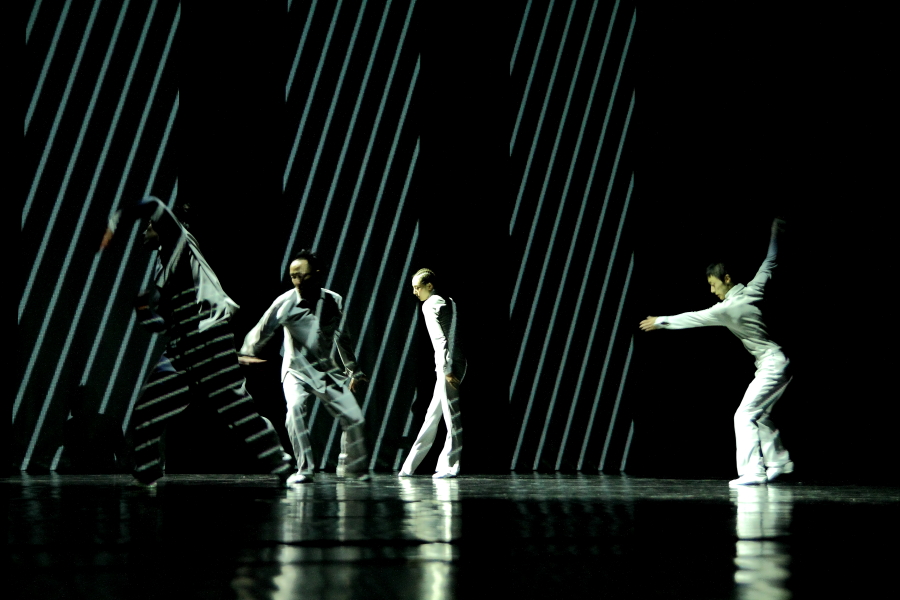
Košice 2013 is introduced at the Slovak Institute in Prague
Together with Prague artists, they will commemorate obtaining the title of European Capital of Culture 2013
Introducing Košice as next year’s European Capital of Culture (ECOC) is one of the aims of the Travelling City project, promoting the Košice 2013 brand in Central Europe. In Prague, it was introduced at the Slovak Institute on 5th and 6th September 2012.
“Košice was and still is on the cultural map of Europe. We are striving to promote it and strengthen its position on the international scene, mainly in the wider Central European area between Berlin, Budapest, Vienna, Prague, Krakow and Lviv, “ the aim was explained by the Artistic Director of the non-profit making organisation Košice 2013, Vladimír Beskid. According to him, Košice may play an important role in deepening mutual communication between cultures as well as in confronting contemporary arts. “We are interested in bringing top European art to Košice as well as promoting ‘ours’ abroad and in creating a certain communications channel which can also function after our mission in 2013 is complete,” he added.
Košice 2013 introduced itself in Prague via two-day image-verbal programme. A literary evening called What Kafka is for Prague, Márai is for Košice was dedicated to the works of the world renowned writer, Košice born Sándor Márai. Slovak actors Szidi Tobias and Peter Havasi pleased the audience by reading passages from his books and in the second part, Košice poet Dalimir Stano presented a small magazine of contemporary literature and art called ENTER, supported by the Košice 2013 project. In the Slovak Institute Gallery, a vernissage also took place in which Vladimír Beskid presented his view of artist Dušan Zahoranský. “His current exhibition, which will last a month, works with words, symbolism, text and context. Zahoranský is very familiar with the Košice environment and we consider him to be an important figure in not only the Slovak but also the Czech art scene. We are glad he will also take part in our further projects in 2013,” added V. Beskid.
Before the media, the Artistic Director of Košice 2013 n.o. also introduced the programme structure of the project. It consists of key events which number 25 and which are of a national and European dimension, as well as approximately 60 significant events and around 300 accompanying events of a smaller nature, mainly implemented by cooperating subjects, cultural operators and civic associations. The Košice 2013 arts and culture programme covers international, national and local scenes. The concept of the programme structure does not only rely upon individual cultural events in 2013. “Its main aim is to start the process of long term development and stimulate conditions for cultural operators in the whole region, to support international partnerships and new creative initiatives which have a chance of a promising, long term existence,” added the Head of the Section for Project Development of Košice 2013 n.o., Jakub Urik. According to him, thanks to this approach, Košice has the opportunity to start developing a creative economy and gradually transform from an industrial to a creative city. The final result for the future will mean faster economic growth and more job opportunities for the East of the country. From the grant scheme of the Ministry of Culture SR, €3.32m was awarded for the implementation of a cultural programme in 2012 and the same sum is earmarked for 2013. In 2012, the City of Košice contributed €1m towards the running of the organisation and they also plan a similar amount from next year’s budget.
Prague, as the capital of the former Czechoslovakia, significantly influenced the development of the eastern Slovakia metropolis and intensive cultural dialogue still takes place between Košice and Prague. This has also been confirmed by the Two in One gala concert (or Two Cities, One Concert) which, this Saturday (8.9.2012), will remind Košice of the fourth anniversary of being awarded the title of European Capital of Culture 2013. On the main street and on one podium, we will see a meeting between Dan Bárta with his group, Illustratosphere, J.A.R., Jiří Stivín, Košice State Philharmonic Orchestra and Katka Koščová. An exceptional joining of classical music, jazz, funk and chanson will promise 2.5 hours of quality music, during which we will be able to appreciate 80 musicians from Košice and Prague. “Via this joint concert, we would like to strengthen artistic cooperation between European Capitals of Culture – the former which was Prague in 2000, the future which will be Košice in 2013 and we must not forget to mention Plzen whose candidature has been strongly supported by Dan Barta, and who will accept the baton from the leaders of the European Capitals of Culture in 2015,” stated V. Beskid.
The Slovak Institute in Prague is playing an irreplacable role in promoting Slovakia, and especially Košice, in the Czech Republic. Thanks to its Director, Ladislav Snopko, who accepted the task of Project Ambassador, the Czech public will have the opportunity to get to know Košice. It will include a travelling exhibition around town halls and various public areas. Cooperation with the Avoid Gallery in the former warehouse on the embankment and the dock on Rašín’s waterfront in Prague looks very promising and interesting for next year. “With its historic as well as cultural identity, Košice is extending the cultural dimensions of Slovakia with a European multicultural environment always able to live its own life. Despite the fact that Košice is situated on the very edge of Western European civilisation, the easternmost Gothic cathedral is situated right in Košice,” stated the Director of the Slovak Institute, Ladislav Snopko. He added with a smile that for him personally, a very good reason to support Košice as ECOC is the fact that he was born there and was christened in the mentioned cathedral – St. Elizabeth’s Cathedral – although he lives in the Tatras.
